Suunto 5 GPS sports watch review
The latest smartwatches are giving the traditional cycle computers a real run for their money. The Suunto 5 can do everything the best bike-specific head units can, plus a lot more that they can’t
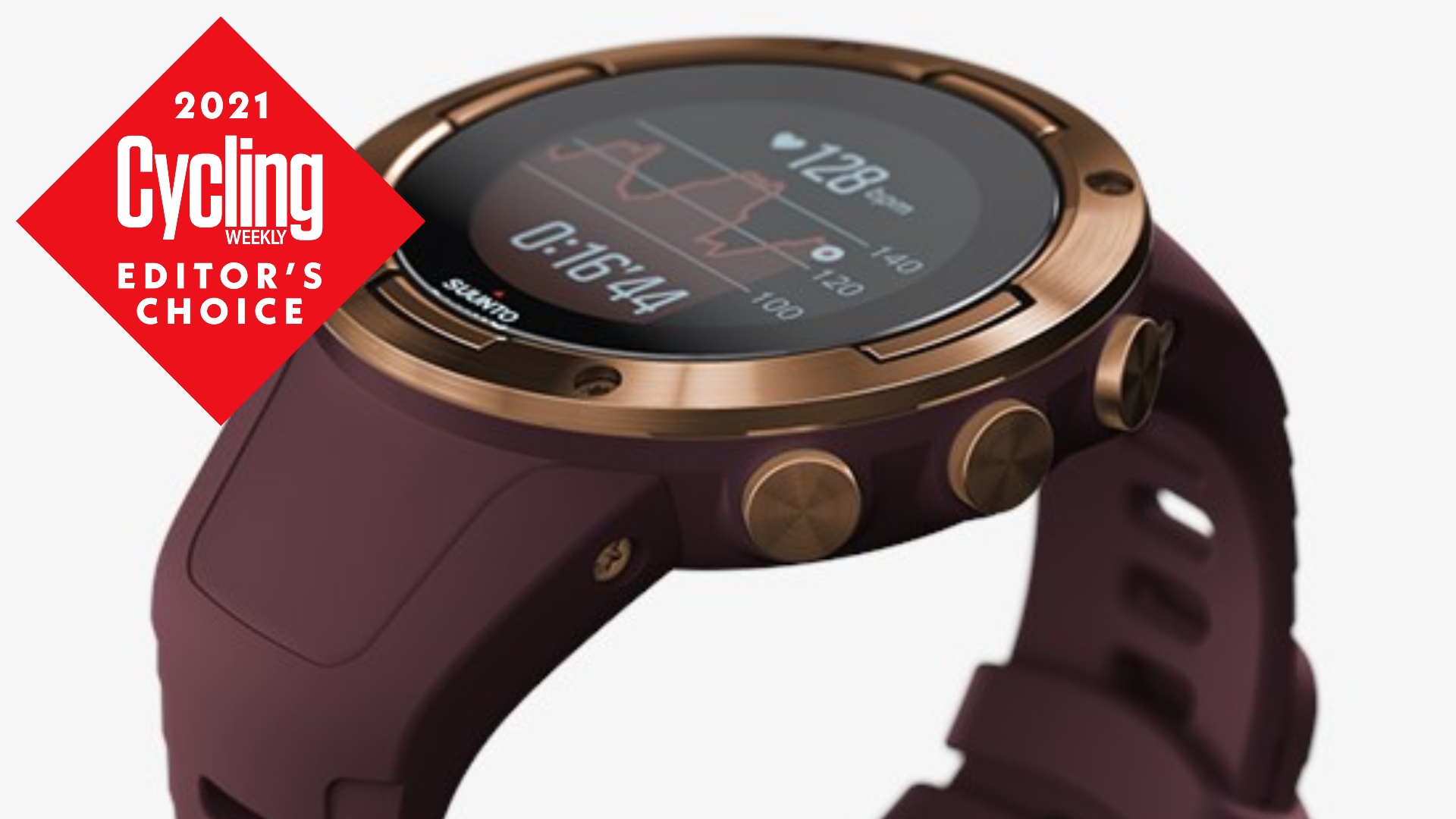
The Suunto 5 is absolutely rammed with intelligent features – though not all of them useful for dedicated cyclists – and makes a great training companion. We found the heart rate monitor to be temperamental but it may work better with thicker wrists.
-
+
High level of functionality and loads of sports features
-
+
Very accurate GPS
-
+
Reliable syncing
-
+
Suunto app is excellent
-
-
Small screen for the size of the watch
-
-
Unreliable optical heart rate monitor
-
-
Moulded strap not ideal for smaller wrists
You can trust Cycling Weekly.

Wearables, and that includes GPS watches like the Suunto 5, are becoming increasingly sophisticated, offering a whole raft of additional performance metrics using heart rate variability, sleep, stress and other data to track your condition – things that a computer, bolted to your bars rather than busily gathering data 24/7 via your wrist – is powerless to do.
>>> The best smartwatches for cycling: buyer's guide
If it’s mainly used for sports such as cycling and running, the Suunto 5 has everything you need. The main difference between it and its bigger, range-topping sibling the is the Suunto 9 Baro (£539) is that the latter has weather tracking functions (via the barometric altimeter), a compass, a slightly higher screen resolution (plus it's a touchscreen), it’s waterproof to 100 metres instead of 50 and it’s a bit bigger and heavier – which may not be ideal for cycling and running anyway.
Suunto 5: size and weight
At 66g the Suunto 5 is quite chunky already. The Coros Pace 2, claimed to be the world’s lightest smartwatch, weighs just under half that while the Wahoo Elemnt Rival weighs 53g – but the Suunto 5 is not the heaviest: the Garmin Fenix 6 Solar weighs 84g and the Suunto 9 just a little less at 81g. Obviously the extra grams don’t make much difference when you're cycling. It’s when it’s being used for running that weight becomes an issue, especially if the strap isn’t snug-fitting enough, because heart rate tracking via the optical HRM is more easily lost. Optical heart rate monitors are not as accurate as chest straps, but I found the Suunto 5 particularly prone to dropping out and spiking due to moving around on my wrist. The lighter Wahoo Elemnt Rival – which also has a more flexible strap for better wrist contact – for me has the most accurate wrist-based HRM, but even that's not 100 per cent immune to spikes and dropouts.
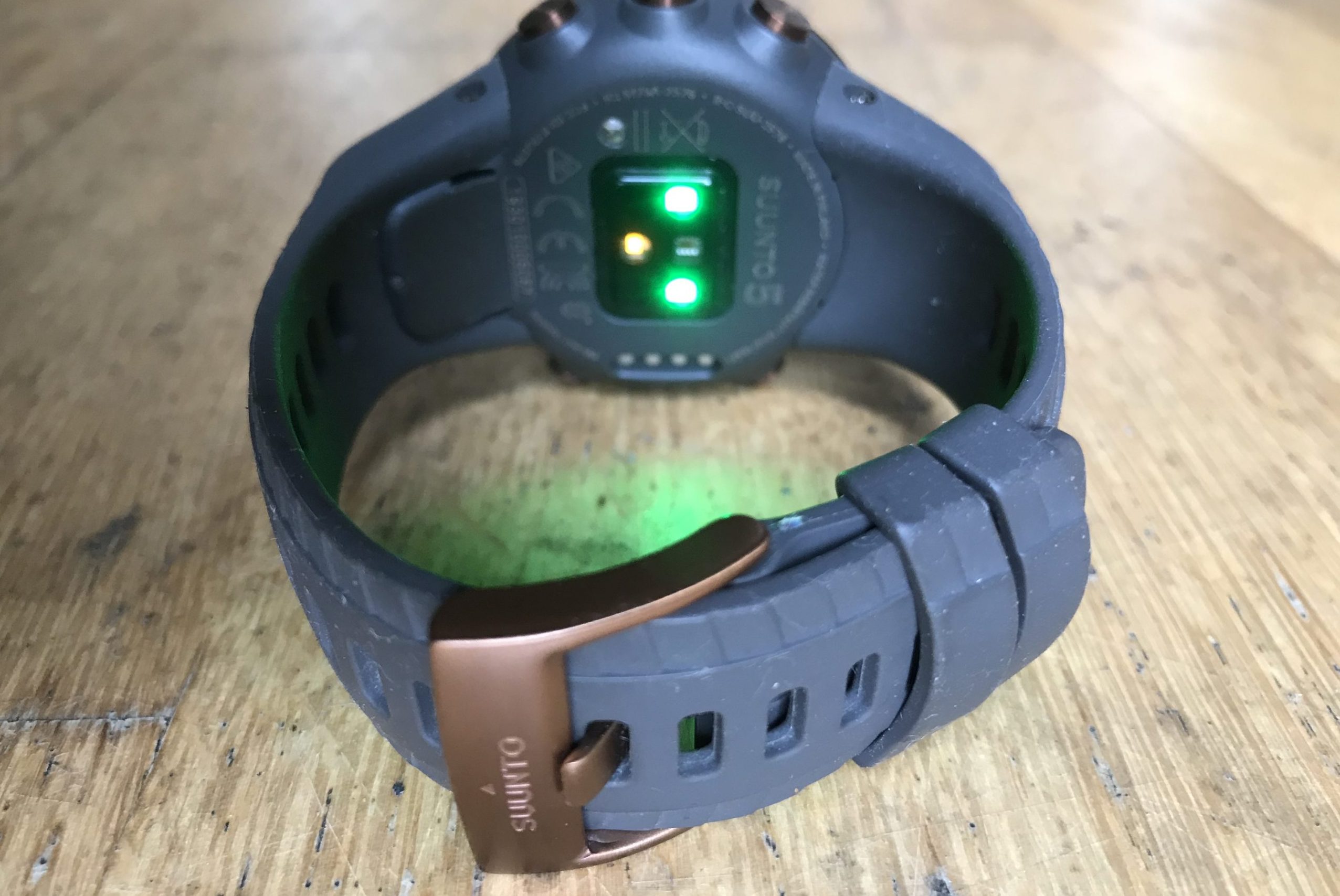
For the watch’s size, the screen is on the small side at 30mm. There’s a large stainless steel bezel around it that looks classy but serves no actual purpose – and then a black inner ring. This space might be put to better use by enlarging the screen. We found the Polar Vantage M screen at 46mm was bigger and brighter too – and it weighs 45g. The Polar shared the Suunto's optical HR unpredictability, however.
Screen and buttons
Operation is via five buttons – there’s no touchscreen. The menus are not as intuitive as Garmin’s or Wahoo's which is a little frustrating at first, but since it’s on your wrist day and night you do get used to it. Paul Norman found the Suunto 9's touchscreen more intuitive. That said, for a right-handed person wearing the watch on their left wrist, the start/stop button is where it should be at top right, and the buttons themselves have a positive, high-quality feel.
As I've mentioned, the screen could be a little bigger for the size of the casing, and is consequently not the easiest to read on the move, especially if you want to use the maximum seven data fields.
The watch face is customisable with various digital and analogue displays and colours to choose from.
Navigation
Like the 9 the 5 uses GPS, GLONASS, Galileo, QZSS and BeiDou for its tracking and navigation – which is super accurate. GPX routes are created or imported via the excellent Suunto phone app. Creating them is as easy as simply tapping the map, and if you need inspiration the heatmaps function lets you see frequently used tracks by other Suunto users – and you can sort them by sport.
Navigation is breadcrumb style rather than basemap and is not turn-by-turn, although it is still followable. A cycle computer such as the Garmin Edge 530, which costs a similar amount to the Suunto 5, obviously does this much better.
The Suunto 5 found the satellite signal really quickly – faster than many devices from rival GPS computer manufacturers that I’ve used.
Connectivity
Here it's just like a cycling computer, connecting to peripheral sensors very easily via Bluetooth (no ANT+). Syncing with the Suunto phone app happens automatically/in the background and is very neat, never asking to be manually paired again after the initial, very straightforward, setup. As you'd expect, the Suunto 5 is compatible with Strava, TrainingPeaks, Endomondo and more, and can be set to automatically share activities with them.
You can get your smartphone notifications and WhatsApp messages, which is a novelty at first but then bleeps and vibrations from both your wrist and your pocket can get annoying – especially for your partner – so fortunately you can turn them off too.
Sports modes
The Suunto 5 has pre-set default sport modes – there are up to 80 according to the spec – or you create your own. I created my own in order to get the metrics I wanted on the same screen, and these are customisable, whereas the default ones aren’t.
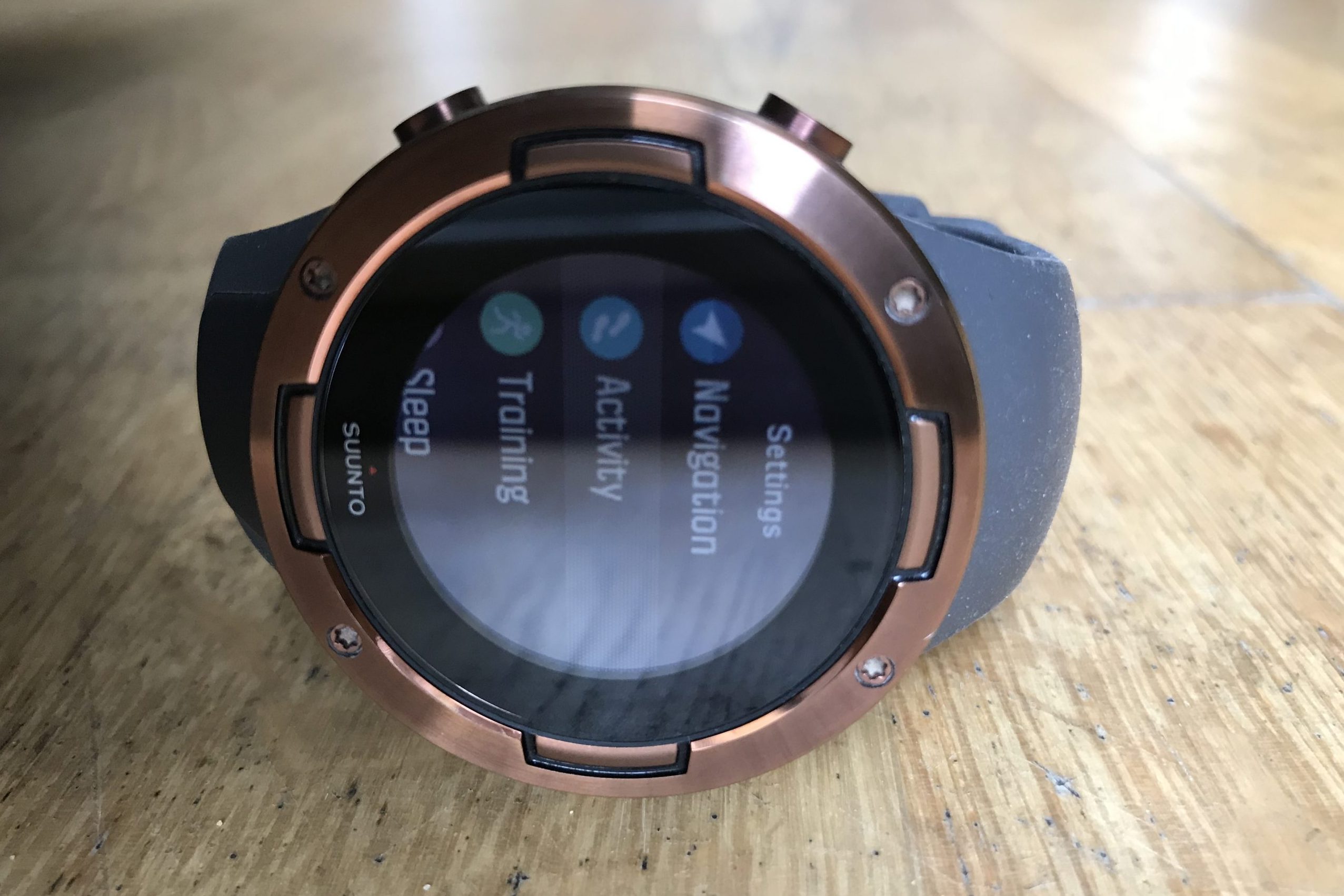
The watch remembers which sport mode you last used and that’s at the top of the menu for next time, along with the second one in second place and so on, so you don’t scroll through sports you never use.
Fitness tracking
The latest generation of smartwatches tracks everything you do in order to give you a summary of your overall recovery and readiness to train again in a percentage. Garmin has trademarked ‘Body Battery’, which is a good description of what it is; Suunto calls it ‘Resources'.
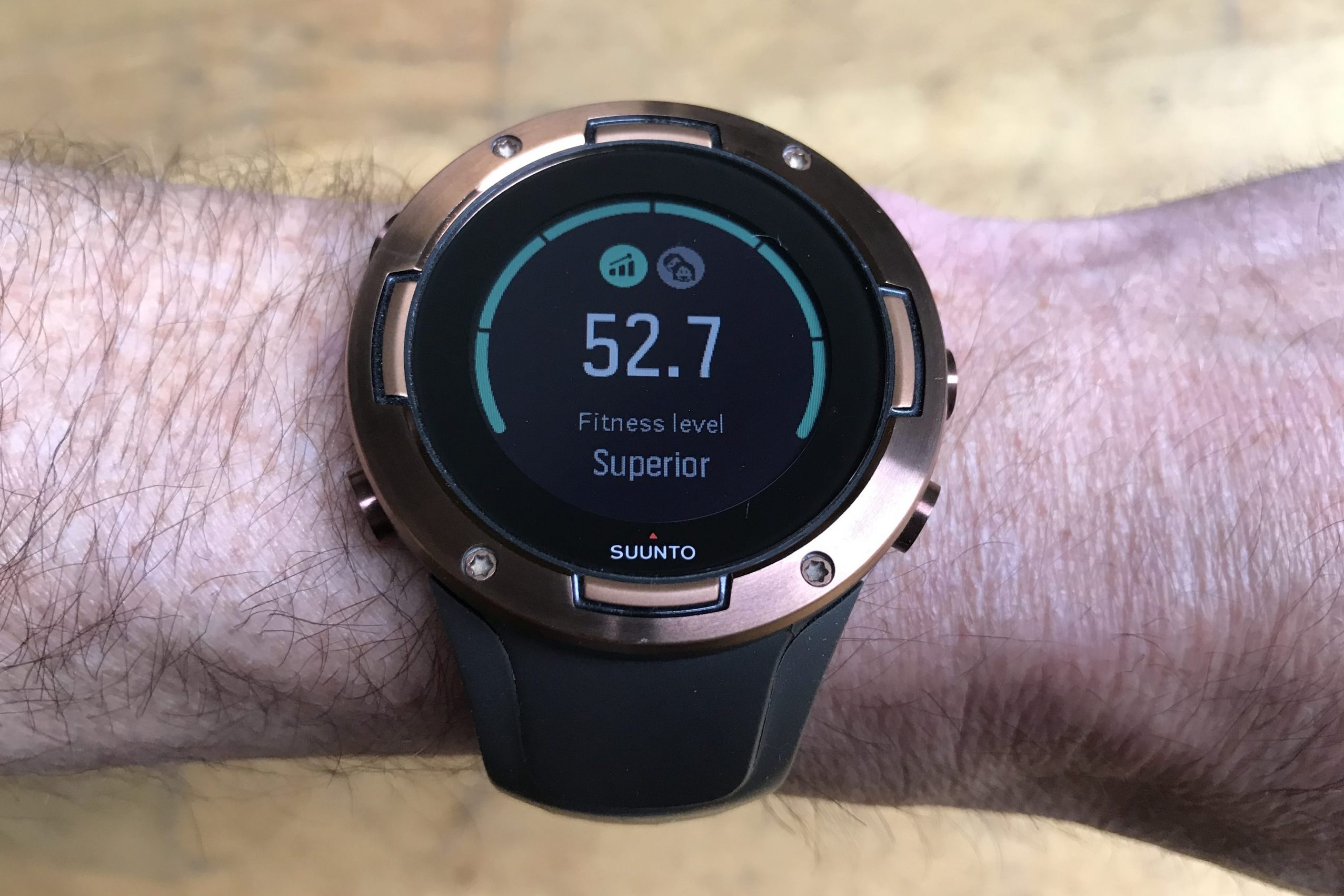
The Suunto 5 also gives you a rolling VO2max estimate, which I found tied in with the one Garmin had given me, and more or less the same as Strava's, but could fluctuate unrealistically due to poor heart rate data.
It will also tell you when you’re stressed and need to recover post-activity.
The sleep tracker counts the hours you got and gives you heart rate feedback – but I found this not particularly accurate, probably because the optical heart rate monitor could drop the signal and then the watch would conclude there was no available data.
As is standard for wearables, there’s a calorie calculator and a step counter – of limited usefulness if you’re a regular exerciser already, but if you’re the traditional type of cyclist who likes to save their legs and spend as little time on their feet as possible, you can always use it in reverse to keep your step count down.
Adaptive training
The Suunto 5 will set a seven-day training plan for you, and you can choose between 'maintain', 'improve' or 'boost'. For experienced cyclists – or runners – who do more targeted training for their sport it’s a little limited, especially as it doesn’t specify which sport you should be doing, but for general fitness – assuming accurate heart rate data – it’s a good way to stick to a programme. If you get ahead of the programme or if the watch detects that you’re not recovering sufficiently, it will adapt the programme. And during an activity – running, for example – if you’re going too hard or not hard enough for the prescribed intensity, it will send a bleeping, vibrating alert telling you to slow down or speed up.
Battery life
Suunto has paid a lot of attention to intelligent battery management and the battery life is good. Suunto claims 40 hours in training mode and 14 days in watch mode. I was charging it every five or six days, exercising daily. You can change battery modes to get a longer runtime, and the watch will send you reminders when the battery is low, anticipating a sports activity. The new Garmin Enduro claims an incredible 50 days in smartwatch mode or 65 using solar power, but also costs well over twice the price.
Suunto 5: the ride
The Suunto 5 has a digital ‘personality’ that’s easy to live with. I found it kept me focused on fitness even if I wasn’t necessarily following its training programmes (I set ‘boost’ just for this review but found I was exceeding that anyway). It comes across as very organised, intelligent and super keen on sport, which is just what you want if you’re trying to stay motivated through a pandemic with no racing calendar.
Yes, the heart rate monitor was a little disappointing, but it was much better for cycling than for running, and at Cycling Weekly that’s obviously the bit we’re most interested in. I would use a chest strap – any Bluetooth chest strap will work – for more accurate running data. Perhaps so that the Suunto 5 records HR data more accurately for a wider range of wrist sizes – it seems aimed a thicker male wrist – the tops of the strap on either side of the face could be a little more flexible so they wrap the wrist more securely to ensure better contact.
I don’t think I would replace a dedicated cycling computer with the Suunto 5, mostly because of the screen size, but would happily use both, which would then mean the cycling activities wouldn’t be part of the Suunto’s 24/7 fitness tracking and it would be more difficult to get an overall picture from the Suunto 5 of your actual fitness. This differs to the likes of Garmin where the entire ecosystem interacts, for example if you use a Garmin Fenix and Edge head unit. However, if you're syncing both devices to a third-party app you'll be able to analyse workouts and all will contribute towards a training load calculation.
Value and comparision
The Suunto 5 is in the middle of the Finnish brand’s range at its SRP of £299.99. Suunto’s flagship multisport smartwatch (ie suitable for cycling) is the Suunto 9 Baro (£539), then comes the Suunto 7 (£429). Below it is the Suunto 3 at £199.
The Suunto 5 is considered mid range in the general multisport watch market too, possibly now in the mid-to-lower bracket with the release of the new Garmin Enduro, which costs a penny under £800.
For purely cycling, if I had about £250 to spend (the Suunto 5 is currently discounted to £239.20) and had to choose between the Suunto 5 and a price-equivalent cycling computer like the Garmin Edge 530 (£259.99) I would go for the Garmin mainly because the screen is bigger and it's in a position on or in front of the stem where it's easier to read. But if you're wanting to track multiple sports rather than specialising in one, and like the extra data from wearables, then the Suunto 5 has it covered. There are just a few areas in which it doesn't excel – optical heart rate monitoring (for me at least) and screen readability being the main ones.

Thank you for reading 20 articles this month* Join now for unlimited access
Enjoy your first month for just £1 / $1 / €1
*Read 5 free articles per month without a subscription

Join now for unlimited access
Try first month for just £1 / $1 / €1
Get The Leadout Newsletter
The latest race content, interviews, features, reviews and expert buying guides, direct to your inbox!
Simon Smythe is a hugely experienced cycling tech writer, who has been writing for Cycling Weekly since 2003. Until recently he was our senior tech writer. In his cycling career Simon has mostly focused on time trialling with a national medal, a few open wins and his club's 30-mile record in his palmares. These days he spends most of his time testing road bikes, or on a tandem doing the school run with his younger son.
-
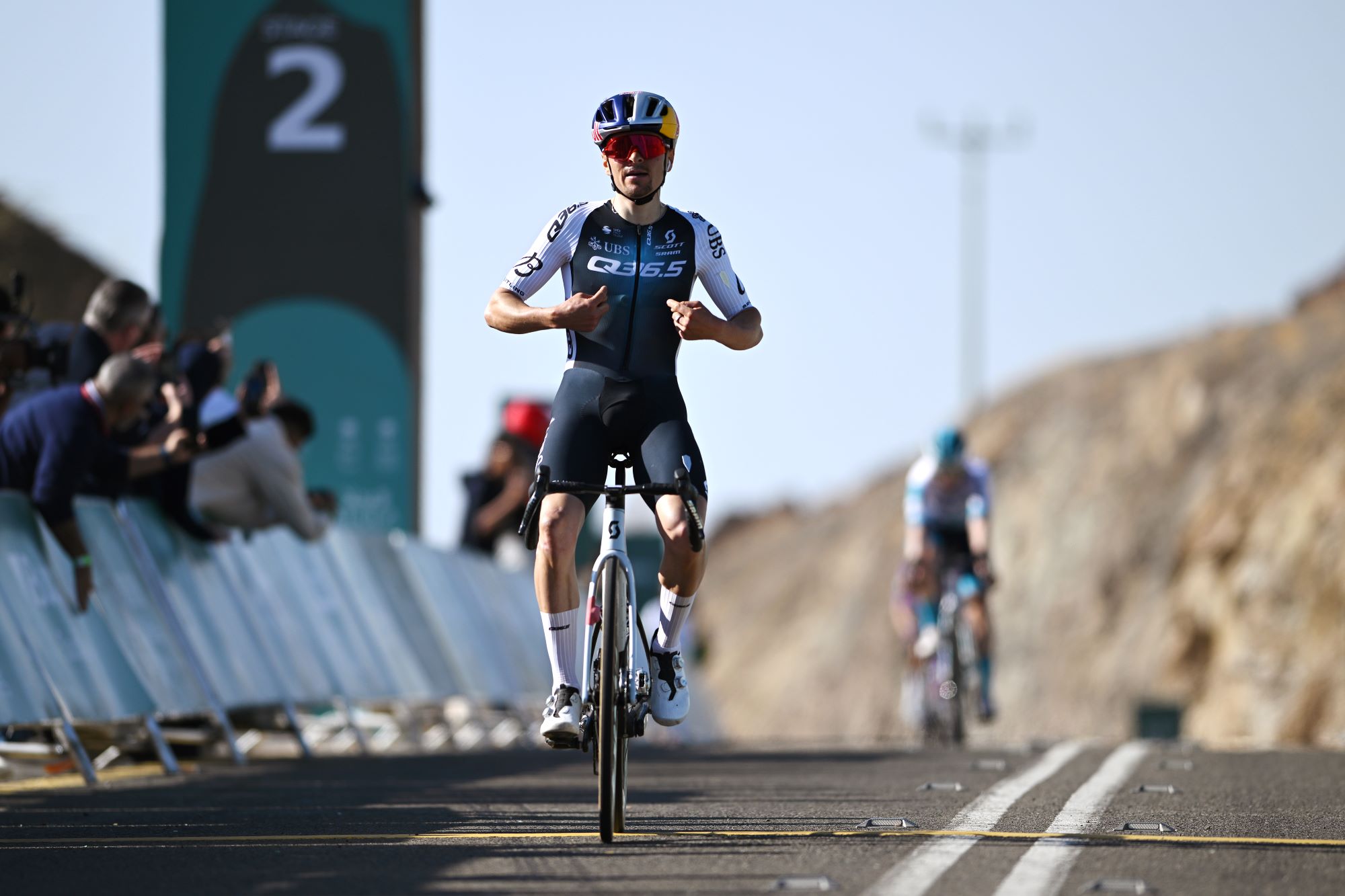 What does Q36.5 mean? We asked the people behind the Italian kit brand that sponsors Tom Pidcock's team
What does Q36.5 mean? We asked the people behind the Italian kit brand that sponsors Tom Pidcock's teamQ36.5's Luigi Bergamo and Lodovico Pignatti Morano take on Cycling Weekly's Q&A
By Tom Thewlis Published
-
 'If I were a tennis player then my career would be over': Remco Evenepoel contemplated early retirement after serious training accident
'If I were a tennis player then my career would be over': Remco Evenepoel contemplated early retirement after serious training accidentDouble Olympic champion was left with nerve damage and says his shoulder is not yet fully healed ahead of his return to racing at Brabantse Pijl
By Tom Thewlis Published
-
 'It can really push me along' - How a velodrome comeback is making Caleb Ewan faster on the road
'It can really push me along' - How a velodrome comeback is making Caleb Ewan faster on the roadAustralian says he'll "definitely" continue track work after rekindling passion
By Tom Davidson Published